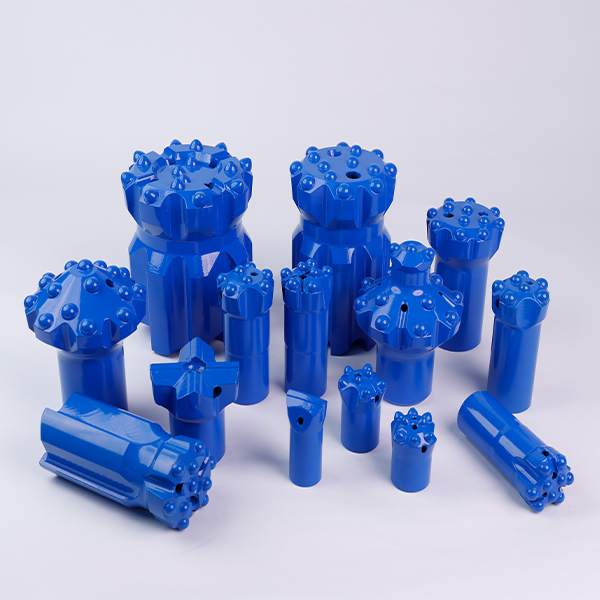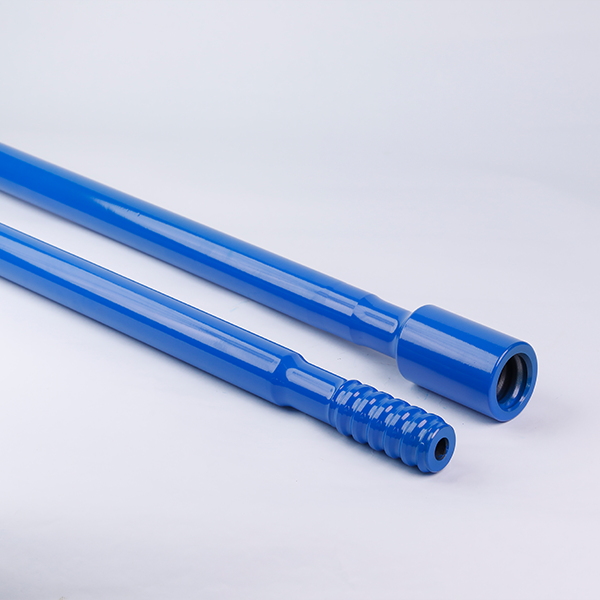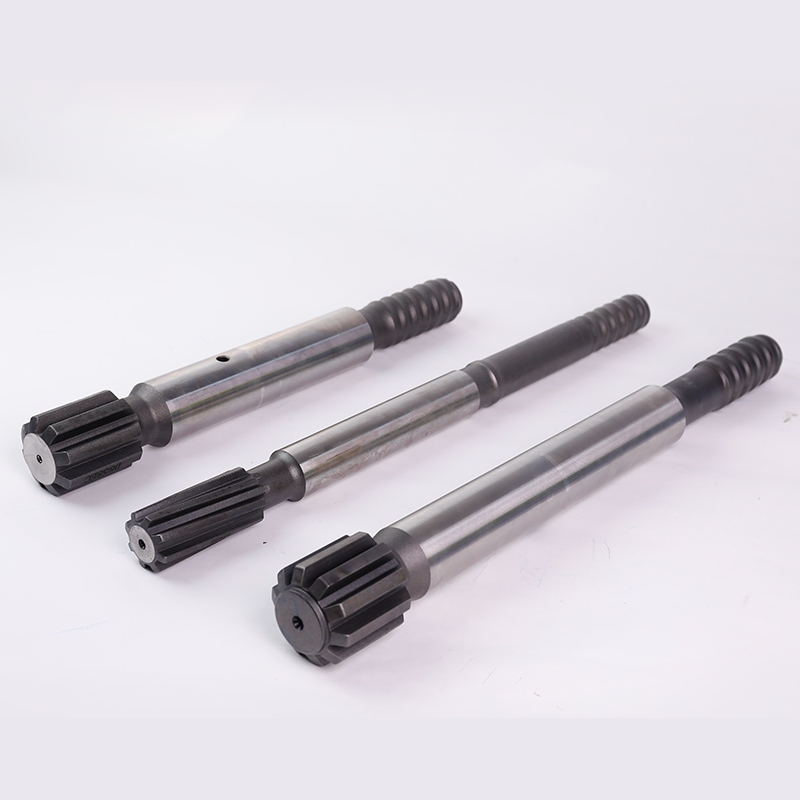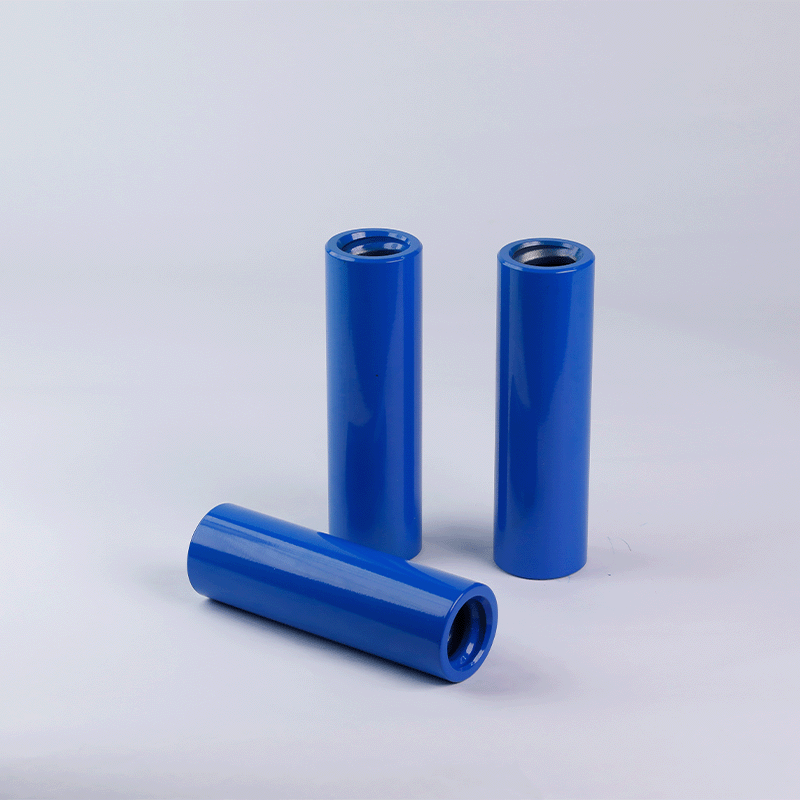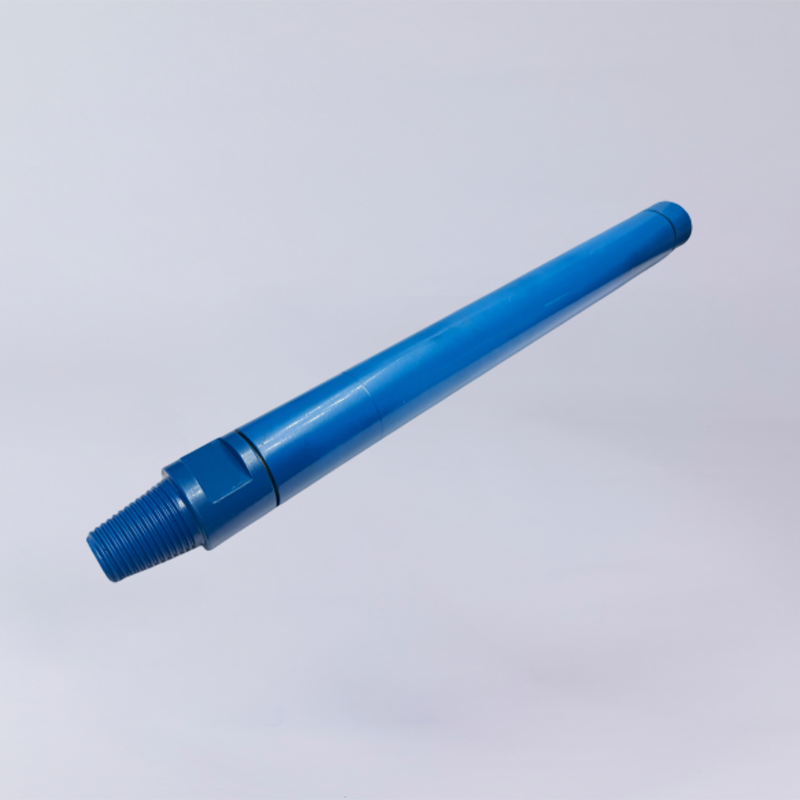In the fields of geotechnical engineering, mining, and geological exploration, DTH drilling technology has become an indispensable and vital construction method with its efficient and accurate drilling performance. This article will give you a detailed concept, origin, key components, principle, application field, and advantages of DTH drilling technology to help you fully understand it.
What is DTH drilling?
DTH drilling uses compressed air as the power and well-washing medium. It uses the energy of compressed air to convert wind energy into mechanical energy through a DTH hammer to achieve impact on the bottom of the hole. The rock at the bottom of the hole is fractured through impact rotation, with the primary method being impact, resulting in the rock breaking in volume. In air drilling, the air displacement is large, the bottom of the hole is clean, and repeated crushing is less.
Origin and Development of DTH drilling
In the early 1970s, China began scientific research, tackling key problems and conducting experimental studies on DTH drilling tools. After years of dedicated efforts, China's DTH drilling has achieved remarkable technological advancements and gradually reached a globally competitive level.
Entering the 21st century, with the continuous development of China's economic construction, the market demand for various rock-drilling projects has been on the rise. Against this background, DTH drilling technology, with its advantages of high efficiency and strong adaptability, has been widely used in mining, tunnel excavation, hydropower projects, and other engineering projects. At the same time, the industry has continuously promoted technological innovation and equipment optimization, constantly improving the performance and applicability of DTH drilling technology and pushing this technology to a new stage of development.
Key Components and Their Functions
In DTH drilling technology, DTH hammers, DTH drill bits, DTH drill pipes, and drilling rigs are commonly used key tools. Each of them undertakes different functions and they cooperate with each other to complete the drilling operation.
DTH Hammer
As the core power-generating tool, the main function of the DTH hammer is to provide high-frequency impact force for the drill bit, directly acting on the rock to break it. According to different working air pressures, DTH hammers can be divided into three types: low-pressure hammers, medium-pressure hammers, and high-pressure hammers to meet the needs of rocks with different hardness and engineering requirements.
DTH Drill Bit
I have previously introduced what is the DTH drill bit, as the terminal component for directly breaking rocks, the DTH drill bit closely cooperates with the DTH hammer. It uses high-frequency impact energy and the rotational torque of the drilling rig to split the rock and form a borehole. At the same time, its unique structural design can effectively guide the drilling direction and ensure the verticality of the borehole. Corresponding to the DTH hammer, DTH drill bits are also divided into three types: low-pressure drill bits, medium-pressure drill bits, and high-pressure drill bits. The appropriate type should be selected according to the actual working conditions.
DTH Drill Pipe
In the drilling system, the DTH drill pipe is the key part connecting the power head of the drilling rig with the DTH hammer and drill bit. Its main function is to connect the power head of the drilling rig with the DTH hammer and DTH drill bit, forming a channel for energy transmission and medium circulation. By transmitting the rotational torque and thrust of the drilling rig to the DTH hammer and DTH drill bit at the bottom of the hole, it drives them to impact and break the rock and extend the borehole, ensuring the continuity and high efficiency of the drilling process.
Application fields of DTH drilling
DTH drilling has a wide range of applications, mainly including the following aspects:
Water well drilling
DTH drilling can be used for drilling groundwater wells, water supply systems, and water resource exploration, especially in hard rock formations where high-efficiency penetration is required.
Underground engineering
In underground engineering projects such as foundation engineering, hydropower stations, and tunnel construction, DTH drilling is used for precise drilling operations, including rock breaking, and blast hole drilling.
Geotechnical engineering
Mountain-opening DTH drilling vehicles are used for geotechnical exploration, geotechnical sampling, slope stability monitoring, and subsurface condition assessment, which helps to understand the mechanical properties and structural characteristics of underground soil and rocks.
Mining
DTH drilling technology is widely used in mining operations, covering exploration, open-pit and underground mining, and production drilling for efficient extraction of mineral resources.
Working principle of DTH drilling
The working principle of DTH drilling mainly consists of two key stages: energy transfer, impact, and rotation. The details are as follows:
Energy transfer
The drilling rig generates compressed air through an air compressor. The compressed air enters the DTH hammer, driving the internal piston to move back and forth at high speed, thus generating high-frequency impact force.
Impact and rotation
The high-frequency impact energy generated by the DTH hammer acts directly on the DTH drill bit. Through the drill bit, the impact force is transmitted to the rock surface, causing the rock to break. At the same time, the DTH drill pipe rotates continuously, driving the DTH drill bit to move within the rock. The cutting teeth's shearing action further grinds the rock broken by the impact into fine debris. The synergistic effect of impact and rotation achieves efficient rock breaking and ensures the continuous progress of the drilling operation.
Advantages of DTH drilling
DTH drilling has the following advantages over other drilling methods:
High efficiency
High drilling efficiency, especially in solid rock formations, the drilling speed can reach 2-5 times that of conventional drilling. Since the hammer is located directly above the drill bit, energy loss is minimal, ensuring that the drilling rate remains relatively consistent even as depth increases.
Low noise
Low noise and vibration, suitable for use in cities and densely populated areas. Compared to other drilling methods, DTH drilling produces less noise and vibration, resulting in reduced environmental and social impact.
Low operating cost
The compressed air eliminates the need to purchase, transport, or treat drilling fluid and reduces the amount of drilling fluid and additives required. Additionally, since the impact force is provided by the impactor, the drill bit experiences less wear.
Wide applicability
DTH drilling technology applies to various geological conditions, such as sand, clay, and rock, and has a wide range of applicability.
Straighter holes
Compared with other drilling methods, DTH drilling offers extremely high precision. The DTH hammer can drill straighter and smoother holes. This characteristic is crucial for applications that require precise alignment of holes.
Conclusion
As an efficient and safe construction method, DTH drilling plays a crucial role in engineering fields such as geological exploration, mining, and tunnel construction. Understanding and mastering the principles and application areas of DTH drilling technology is of great significance to improving engineering quality and efficiency. If you need to use DTH drilling technology in your construction project, you might as well choose a professional construction team and advanced equipment to ensure the smooth progress of the project.

